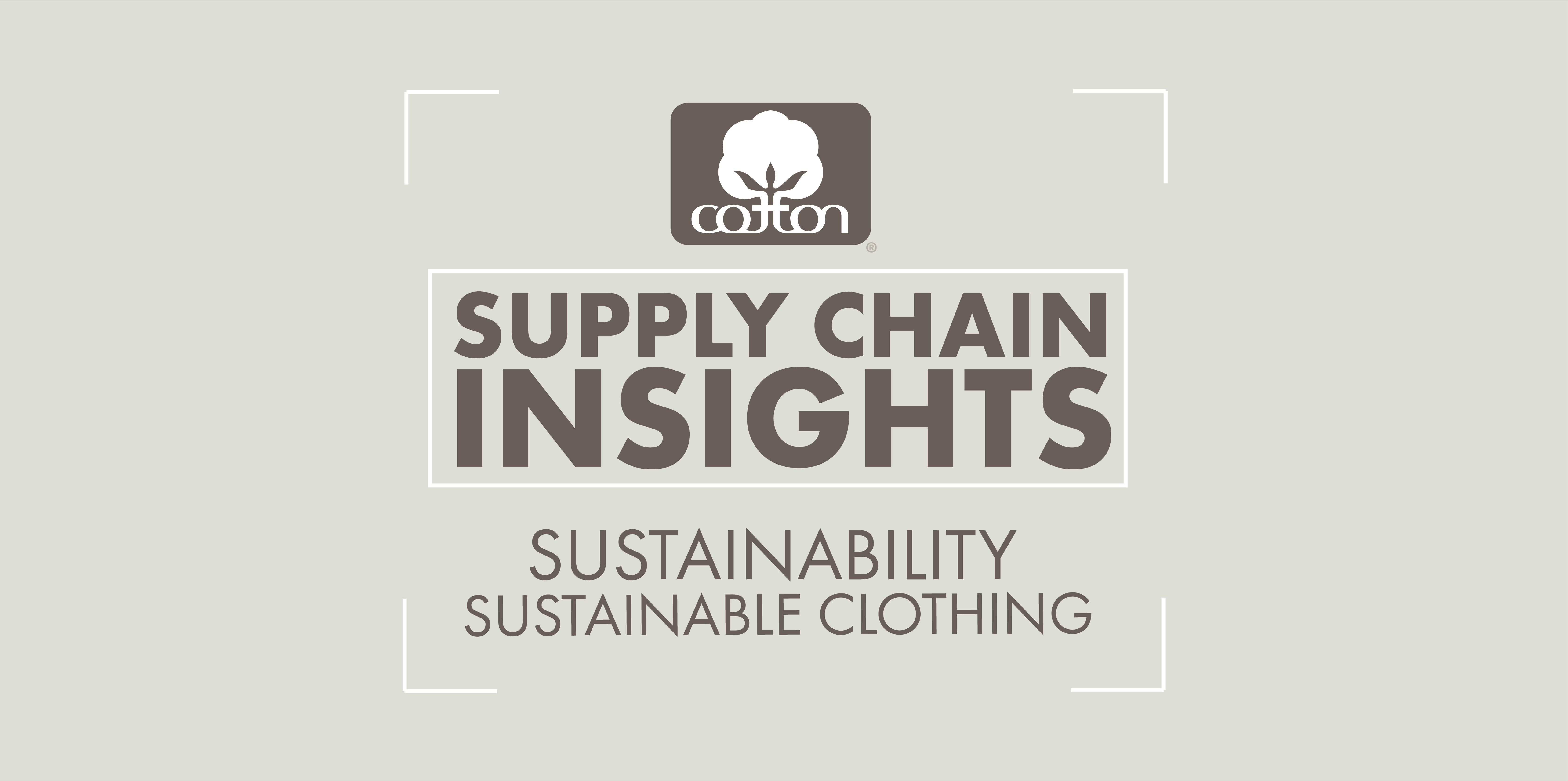Sustainable Clothing
November 15, 2021


ustainability is important to 8 in 10 consumers when
purchasing clothing. While they continue to prioritize
traditional purchase drivers such as comfort and quality,
sustainability can be a differentiator to set a brand apart from
others. With rising awareness of key environmental issues
affecting the textile industry, such as microplastics waste,
sustainable clothing is more important than ever. Brands can
tap into consumer environmental concerns by using natural
fibers such as cotton and by communicating their impact on
the issues consumers care about.
S
SUSTAINABILITY
SUSTAINABLE CLOTHING
IMPORTANCE OF SUSTAINABILITY ON CLOTHING PURCHASES
Percent who say sustainability is an important purchase driver. (+ increase from 2017 research)
COTTON INCORPORATED’S
|
SUPPLY CHAIN INSIGHTS
KEY INSIGHTS
Brands can market sustainability by
connecting its benefits to primary purchase
drivers comfort, quality, and durability.
Brands have an opportunity to build on
emerging awareness of microplastic waste
in the world’s oceans to promote more
sustainable fiber options.
Cotton and other natural fibers are
consistently understood to be more
sustainable than manmade fibers.
WHY IS SUSTAINABILITY IMPORTANT?
CLOTHING PURCHASE DRIVERS
Percent who say sustainable clothing is:
are likely to look for clothing
made from natural fibers
Comfort, Quality, & Fit
+15% +7%
88
%
86
%
84
%
81
%
70
%
70
%
63
%
INDIA CHINA MEXICO ITALY GERMANY U.K. U.S.
55
%
Functions
Better
59
%
Higher
Quality
58
%
Better For
My Health
57
%
Better Value
For My Money
76
%
90
%
+
Durability, Price, Clothing
Material, Softness, & Style
80
%
- 89
%
Sustainability, Color, Performance
Features, & Laundering Instructions
70
%
- 79
%
icroplastic waste is an issue of critical importance to the textile industry. When clothing and
other textiles are washed, they shed microfibers that enter our waterways and, eventually, the
world’s oceans. When those textiles are made from manmade fibers such as polyester and
nylon, they become microplastic waste that infiltrates our oceans. Consumers are taking note of this
concern, as awareness of the issue has nearly doubled since 2017. Following research findings on
biodegradability, consumers who are aware of microplastic waste are more likely to perceive cotton as
safe for the environment, while perceiving polyester as harmful.
Cotton degrades 95% more
than polyester in
wastewater and continues
to degrade over time,
unlike polyester whose
degradation plateaus after
the time tested.
M
COTTON AND MICROPLASTICS
2
Percent of fibers biodegraded after 243 days in wastewater.
Learn more about
Sustainable Cotton Innovations at
http://cottontoday.cottoninc.com
AWARENESS OF MICROPLASTIC WASTE
AWARENESS AND PERCEPTION
OF FIBER SUSTAINABILITY
Percent of consumers who say fiber is safe for the environment.
88
%
COTTON
38
%
POLYESTER
COTTON POLYESTER
76
%
4
%
2017
27
%
45
%
2021
IMPACT OF MICROPLASTIC WASTE
3
1.4 million trillion plastic fibers currently
in the world’s oceans
1/2 million tons of plastic microfibers
from laundry yearly
By 2050, there will be more plastic than
fish in the oceans
4
Source: CCI & Cotton Incorporated’s 2017 & 2021 Global Sustainability Survey, a survey of 6,000 consumers in the U.S., U.K.,
Germany, Italy, Mexico, India, and China. Additional Sources:
2
Marine Pollution Bulletin. (2019). Microfibers Generated from the
Laundering of Cotton, Rayon and Polyester Based Fabrics and their Aquatic Biodegradation.
3
U.N. Environment Programme.
(2019). Fashion’s tiny hidden secret.
4
World Economic Forum, Ellen MacArthur Foundation, and McKinsey & Company. (2016).
The new plastics economy: Rethinking the future of plastics.
©2021 Cotton Incorporated.